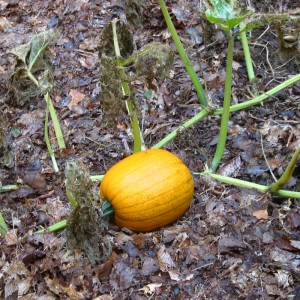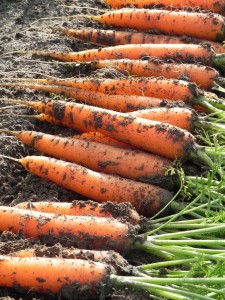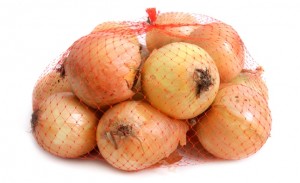Harvest and Storage of Fresh Garden Vegetables
Harvest and Storage of Fresh Garden Vegetables
 Depending on where you live in east Idaho you may have experienced some light frosts by now, maybe even some killing frosts. But even if you didn’t get your garden covered it doesn’t mean your harvest is over. Many crops can be harvested even after Jack Frost has paid a visit to your garden.
Depending on where you live in east Idaho you may have experienced some light frosts by now, maybe even some killing frosts. But even if you didn’t get your garden covered it doesn’t mean your harvest is over. Many crops can be harvested even after Jack Frost has paid a visit to your garden.
Onions, potatoes and other root crops can still be harvested after a frost… right up until there is danger of the soil freezing. Celery and cabbage are frost resistant and can be harvested after the first frosts. And you can continue to harvest kale and collards until it finally freezes hard enough to damage the foliage. Pumpkins and winter squash are usually harvested after the frost has killed the vines. Even then they can be left in the garden for the skins to harden up before storing in the garage or somewhere that is frost free.
 Methods of storing fresh produce from the garden vary with the type of vegetable. The University of Idaho suggest five basic methods. Although each vegetable will keep longest under one of these storage methods, another method may be used with good results as well. For instance carrots will keep best with method 1, but if that is not possible method 4 may be used with fairly good results.
Methods of storing fresh produce from the garden vary with the type of vegetable. The University of Idaho suggest five basic methods. Although each vegetable will keep longest under one of these storage methods, another method may be used with good results as well. For instance carrots will keep best with method 1, but if that is not possible method 4 may be used with fairly good results.
Method 1: Cold, moist storage – 32 – 40 degrees f, 90-95% humidity. For this method place produce in plastic bags in the refrigerator. Example- carrots.
Method 2: Cool, moist storage – 45-50 degrees F, 80-90% humidity. This is a tough one for most people. If possible place produce in plastic bags in a special refrigerator set at a temperature of 45 to 50 degrees. Example- cucumbers
 Method 3: Cool, dry storage – 35-55 degrees F, 50-60% humidity. Place vegetables in mesh or paper bags or boxes in a cool room or building. Example- onions.
Method 3: Cool, dry storage – 35-55 degrees F, 50-60% humidity. Place vegetables in mesh or paper bags or boxes in a cool room or building. Example- onions.
Method 4: Warm, moist storage – 55-60 degrees F, 80-85% humidity. Basements, and garages are great for this method of storage. Cover produce in damp sand, soil or sawdust. Example- mature green tomatoes.
Method 5: Warm, dry storage – 55-60 degrees F, 60-70% humidity. Store in basement or garage in mesh or paper bags or boxes. Example- winter squash.
I don’t have room in this short post to list all of the vegetables and their optimum storage method, but the University of Idaho Extension publication “Harvesting and Storing Fresh Garden Vegetables” is an excellent document with specific information on when to harvest and how to store each vegetable- from asparagus to turnips. Veggies are listed in alphabetical order. Just click on the link and scroll down to the veggie you are looking for. The humidity requirements are most important. If you can’t meet the temperature requirements just get as close as you can, but make every attempt to meet the humidity requirements for best results.


